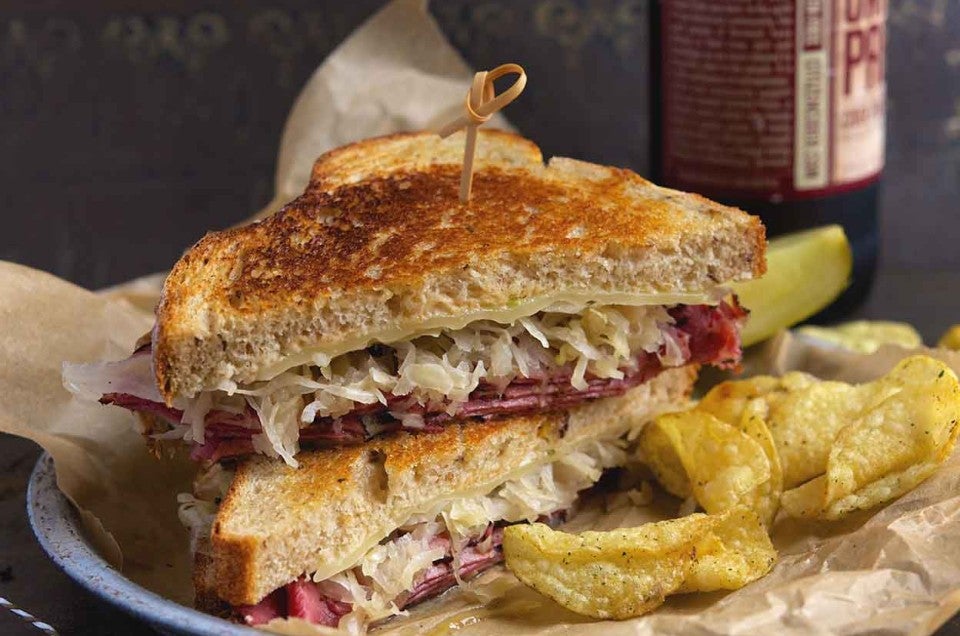


Moist, tender/chewy sandwich rye – is there a better companion to ham and Swiss?
Or, for those of you with more adventurous tastes, liverwurst and onions – with a smear of thick, dark-gold sweet/hot mustard, thank you very much.
What makes sandwich rye's flavor so distinctive?
Caraway seeds? Pumpernickel flour? Mustard?
All of the above, plus...

Dill pickle juice!
Well, why not? A bit of sour, a hint of dill – both flavors eminently suited to rye bread.
Plus, when you get to the end of that jar of pickles, doesn't it bug you just pouring the juice down the drain?
Heaven forbid! Save it for your next batch of Sandwich Rye.
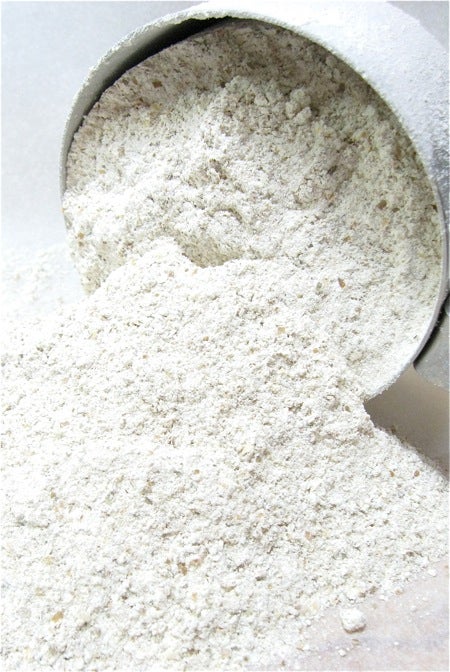
Oh, one more thing before we get started – rye bread demands rye flour, obviously. Choose white rye or medium rye, which are both good all-purpose rye flours; or pumpernickel, pictured above, the rye equivalent of whole wheat flour.
See the flecks? Pumpernickel is a heartier rye flour than either white or medium rye.
By the way, the word "pumpernickel" has an interesting derivation. In German, "pumpern" is "intestinal wind," while "nickel" is a demon or sprite. Let's just leave it at that.

Place the following in a mixing bowl:
2 1/2 teaspoons instant yeast or active dry yeast
2/3 cup to 7/8 cup (152g to 198g) lukewarm water*
1/4 cup (50g) vegetable oil
3/4 cup (170g) dill pickle juice
1 1/2 teaspoons salt
1 tablespoon sugar
1 1/4 teaspoons caraway seeds
1 1/4 teaspoons dill seeds
1 tablespoon yellow mustard seeds or prepared Dijon mustard
3/4 cup (46g) instant mashed potato flakes or 1/4 cup (46g) potato flour
2 1/2 cups (298g) King Arthur Unbleached Bread Flour
1 1/3 cups (138g) pumpernickel
*Use the lesser amount in summer (or in a humid environment), the greater amount in winter (or in a dry climate), and somewhere in between the rest of the year, or if your house is climate controlled.
Don't like dill? Leave out the dill seeds, and use water instead of pickle juice. Don't like caraway? Leave it out. Don't like mustard? Leave it out. These ingredients simply add flavor, and if you don't like them – then of course, leave 'em out!

Mix until clumps form; the dough may seem dry at this point. Let it rest for 20 minutes, for the flour to start to absorb the liquid.

Knead to make a stiff, but fairly smooth dough. It'll take about 7 minutes in a stand mixer at second speed, using the dough hook. The dough should clean the sides of the bowl; if it doesn't, sprinkle in a bit more all-purpose flour.
A bread machine is also a good choice for kneading this dough; it'll do a thorough job. Just program for the dough cycle, and when it's done, shape the loaf as indicated below.
We don't recommend kneading this dough by hand, as it's hard to develop the gluten sufficiently. If you decide to knead by hand, just be aware that the dough is going to be sticky. It's rye; it's supposed to be, and adding enough flour to make your hands comfortable will probably yield a leaden loaf of bread – unless you're REALLY expert hand kneader.
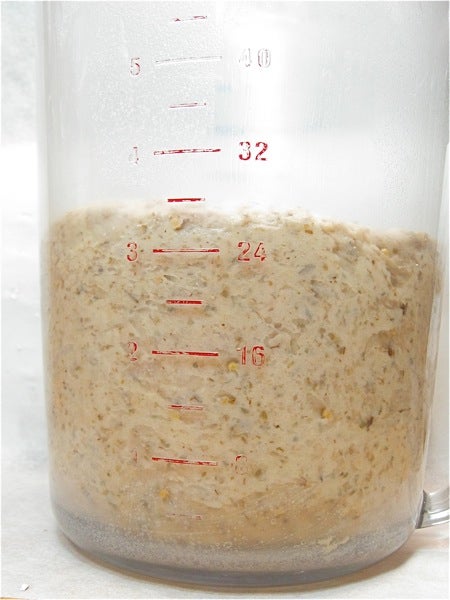
Place the dough in a lightly greased bowl or 8-cup measure, cover the container, and let the dough rise until it's puffy, about 1 to 2 hours.
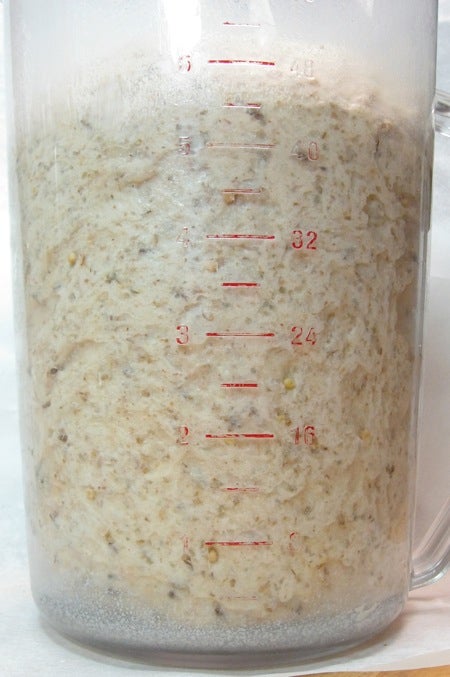
It may or may not have doubled in bulk, but it definitely will have expanded. Actually, this is doing pretty well for rye dough.
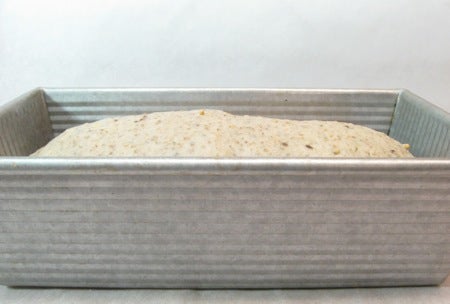
Gently deflate the dough, and shape it into a log. Place the log in a lightly greased 9" x 5" loaf pan.

Tent the pan with greased plastic wrap (or a clear shower cap, as I've done here).

Allow the loaf to rise until it's crowned about 1" to 1 1/2" over the edge of the pan, about 1 to 1 1/2 hours.
Towards the end of the rising time, preheat the oven to 350°F.
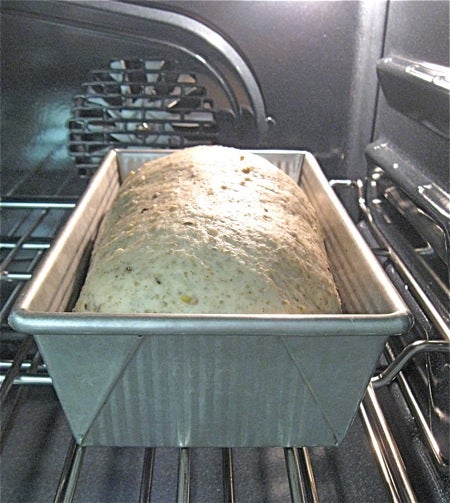
Bake the bread for 20 minutes.
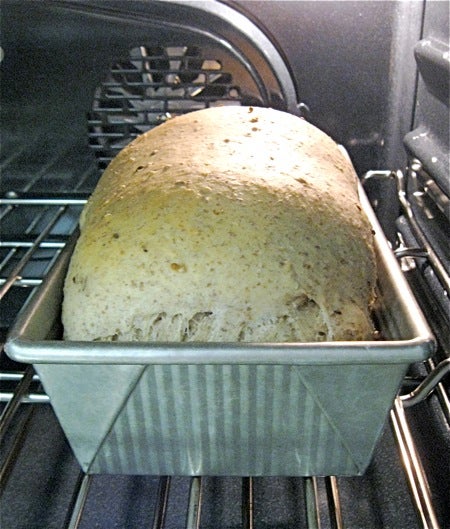
It'll be light brown. Tent it lightly with foil, and bake for an additional 20 minutes.
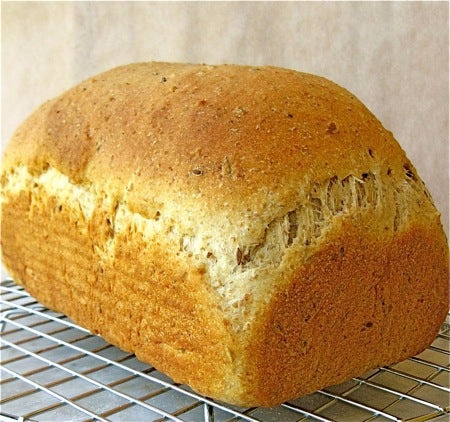
When done the bread will be golden brown, and its internal temperature will register 190°F on an instant-read thermometer.
Remove the bread from the oven, wait 5 minutes, remove it from the pan, and allow it to cool completely on a rack before slicing.

I love it when you can see how the gluten stretched as the loaf baked...
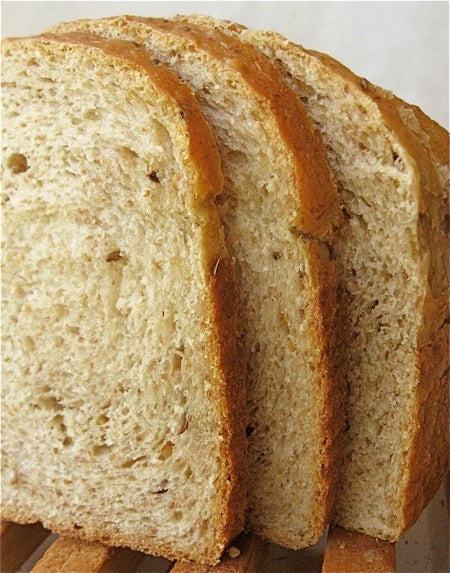
...and I LOVE how nicely it slices.
You know how rye bread can be crumbly to slice? Not this loaf.
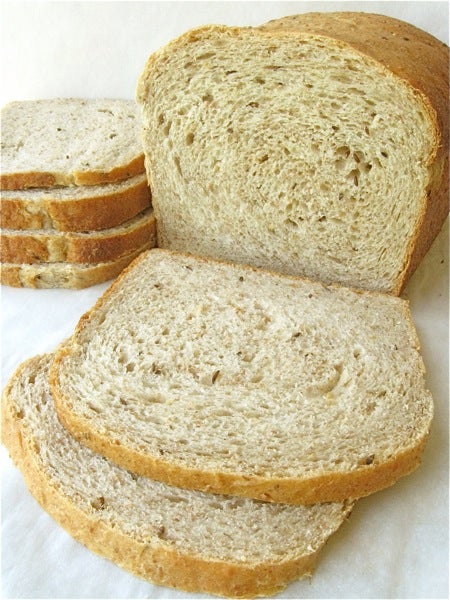
I was having so much fun slicing thinner and thinner slices (see the top slice on the stack in the back?), I just couldn't stop!

And all those slices turned into some really tasty ham and Swiss sandwiches for the Sunday crew here at King Arthur's customer service center.
Plus a liverwurst, onion, and mustard for me.
Chime in, folks – what's your choice, ham and cheese, liverwurst and onion... or something else? Tell us about your favorite rye-bread sandwich.
Read, bake, and review (please) our recipe for Sandwich Rye Bread.

